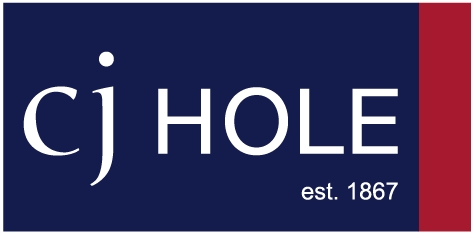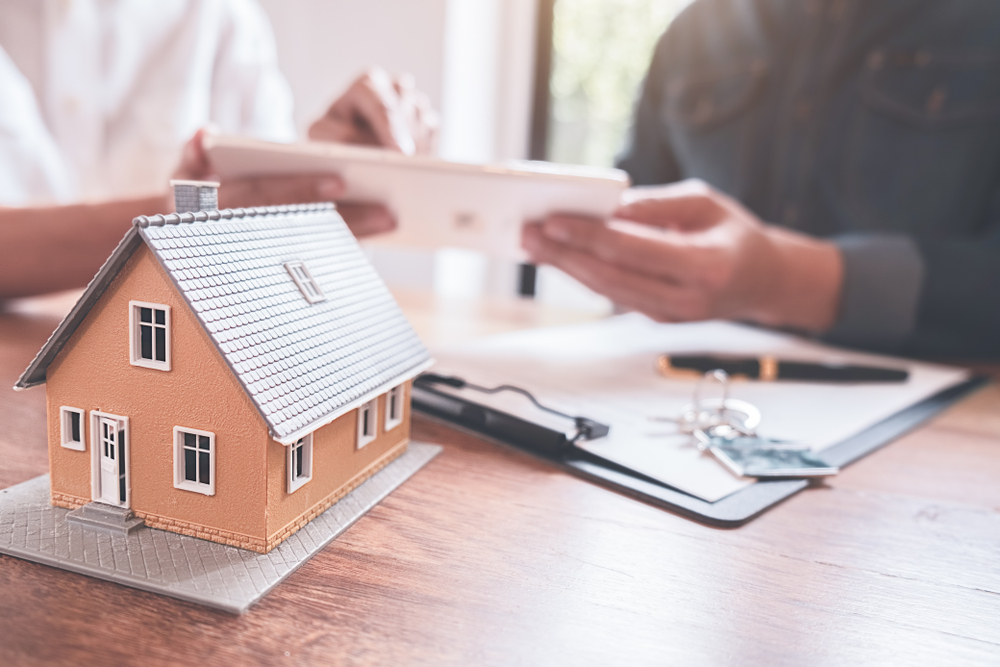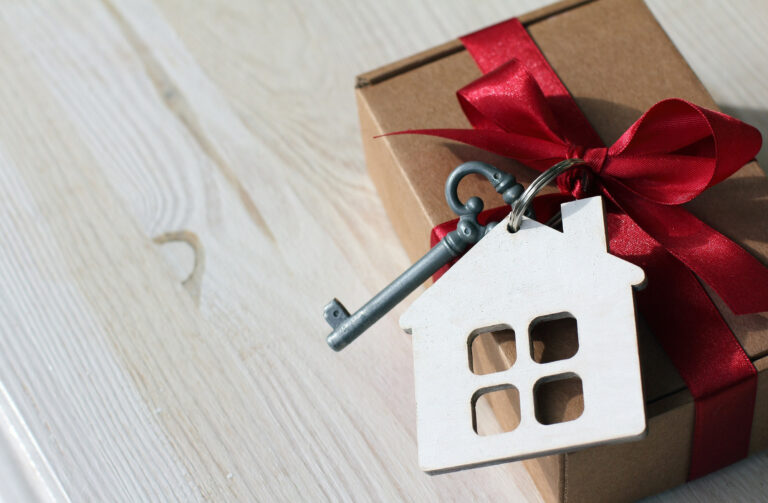Buying a Shared Ownership home is a great way to get a foot on the property ladder.
But when you come to sell a Shared Ownership property and move on, the process can be more complicated.
In this guide, we’ll be explaining how Shared Ownership works and what you need to do when you come to sell in the future.
Shared Ownership explained
The Shared Ownership scheme allows buyers with a 5% deposit to buy a share in a new-build or resale property.
The scheme is ideal for first-time buyers, or those who can’t afford a property that suits their needs.
Because you only purchase a share of a property, usually between 25% and 75% but sometimes as low as 10%, you only need a deposit and mortgage relative to that share.
You then pay a reduced market rent to a housing association on the share you don’t own.
To be eligible for Shared Ownership, you must:
- Be at least 18 years old
- Have a household income of less than £80,000 per year (£90,000 in London)
- Be a first-time buyer, or unable to afford a home that suits your needs
- Either not own a property, or have sold it before buying through Shared Ownership
- Have the required deposit for the share you’re buying
- Not be in mortgage or rent arrears
- Show a sound credit history
Over time, if you wish, you can purchase more of the property, which is known as ‘staircasing’, often up to 100% ownership.
Can you sell a Shared Ownership property?
Once you own a Shared Ownership property, you can sell it at any point.
If you’ve staircased to 100% ownership, you can sell your Shared Ownership home on the open market – just as you would any other property.
If you own a lower share, however, you’ll need to tell your housing association if you wish to sell.
You’ll then go through a slightly different process compared with selling on the open market.
How to sell a Shared Ownership property
If you wish to sell your Shared Ownership property and you own less than 100% of it, you’ll need to go through the following steps:
1. Find out how your housing association works when selling
All Shared Ownership homes are sold on a leasehold basis, meaning you’ll have a lease which outlines all the rules set by the housing association as freeholder.
Housing association rules may differ when it comes to selling, so check the terms of your lease as this will explain exactly what you need to do.
The lease should explain:
- How your property needs to be valued
- Who is responsible for paying what fees when selling
- More about any restrictions on selling
- Details on your housing association’s ‘nomination’ period – the amount of exclusive time they have to try to sell your home
2. Consider the costs involved in a Shared Ownership sale
There are some additional costs you’ll have to pay when selling a Shared Ownership property, as well as more common costs associated with open market sales:
Housing association marketing fees
When you decide to sell your Shared Ownership home, your housing association gets first refusal on finding a buyer.
This is known as a ‘nomination period’.
The housing association will probably charge you a fee for marketing the property during this time, sometimes around £350.
This fee includes professional photography and floor plan generation, as well as costs for listing your property online.
Valuation fee
You’ll need to have your property valued by a RICS surveyor before selling, as this will establish the price your home is marketed for.
The fee for this can vary, but you should expect to pay between £250 and £600.
Leasehold information fee
Because Shared Ownership properties are leasehold, an information pack needs to be created for buyers to look at.
The pack usually contains details on:
- Ground rent, sinking funds, and service charges
- The length of time remaining on the lease
- Future plans for development or maintenance
Expect to pay between £200 and £300 to your housing association to cover the costs of the leasehold information pack.
Energy Performance Certificate (EPC)
If your Shared Ownership property doesn’t have a valid Energy Performance Certificate (EPC), you’ll need to have an assessment before you can legally sell.
EPCs are valid for 10 years, so if you’ve owned your property for less than that time, you should have a certificate already.
If you don’t, expect to pay between £50 and £130 for one, depending on the size of your home.
Conveyancing fees
You’ll need to budget to cover your own conveyancing fees when selling a Shared Ownership property.
But you may also have to pay your housing association’s fees, which can be between £300 and £600.
3. Tell your housing association that you want to sell
Once you’ve decided to sell your Shared Ownership home, the next step is to tell your housing association.
At this point, you’ll need to provide some documentation, which will include:
- An ‘intention to sell’ form
- Signed documentation confirming you agree to the terms of sale
Depending on the terms outlined in your lease, they’ll usually have between eight and 12 weeks to market your home exclusively and find a buyer who is eligible for the Shared Ownership scheme.
If they fail to do so, you can then market the property on the open market yourself.
However, your estate agent will also need to find a buyer who is eligible to buy a Shared Ownership resale property.
4. Get your property valued
To sell your Shared Ownership home, you must have it valued by an independent RICS surveyor.
This will determine the price it’s marketed for and the value of the share you own.
These valuations are usually valid for three months, so if your property doesn’t sell in this time, you may have to have it valued again.
5. Find a solicitor or conveyancer
Once you have a buyer who meets the Shared Ownership eligibility criteria, you’ll need to find a conveyancer or solicitor to complete the legal work for you.
You’ll need to tell your housing association who your solicitor or conveyancer is.
When searching for a solicitor:
- Get quotes up front which include all fees and costs you’ll need to pay
- Consider conveyancers with good experience of selling Shared Ownership properties
6. Conveyancing, exchange, and completion
Your buyer will be assessed by a mortgage broker to ensure they can afford the property and fit the Shared Ownership eligibility criteria.
Once they have the broker’s approval, your property will be reserved for them, and the conveyancing process begins.
This is the part of the process where:
- Conveyancers for you and your buyer draw up contracts of sale
- The buyer’s conveyancer will raise enquiries and questions which will need to be answered by your solicitor and the housing association
- Your buyer’s solicitor will undertake all relevant searches
- The buyer will receive their mortgage offer
- Both conveyancers exchange contracts and agree a completion date
- All money is transferred, and the sale is completed
Is it difficult to sell a Shared Ownership property?
Selling a Shared Ownership property isn’t always easy.
This is mainly because your pool of potential buyers is limited to those who qualify for the scheme – unless you own 100% of the property, in which case you can sell freely to anyone on the open market.
Can you make a profit on Shared Ownership?
It’s possible to make a profit on a Shared Ownership property just as it is any other home.
However, it’s important to remember that any profit you make is relative to the share you’re selling.
For example, if you buy a 25% share in a property worth £100,000 at the time of purchase, your stake would be worth £25,000.
If you later sell that share and the property is valued at £125,000, your share would be worth £31,250 – an increase of £6,250.
Also, Shared Ownership properties must be sold at a price determined by a RICS valuation rather than buyers making offers against an asking price.
So, any profit you make will be determined by that valuation.
Further reading…
- How to sell your house
- 10 things that could affect how much your home is worth
- 9 ways you can make your move stress-free
Still have questions? Contact your local CJ Hole branch today.





